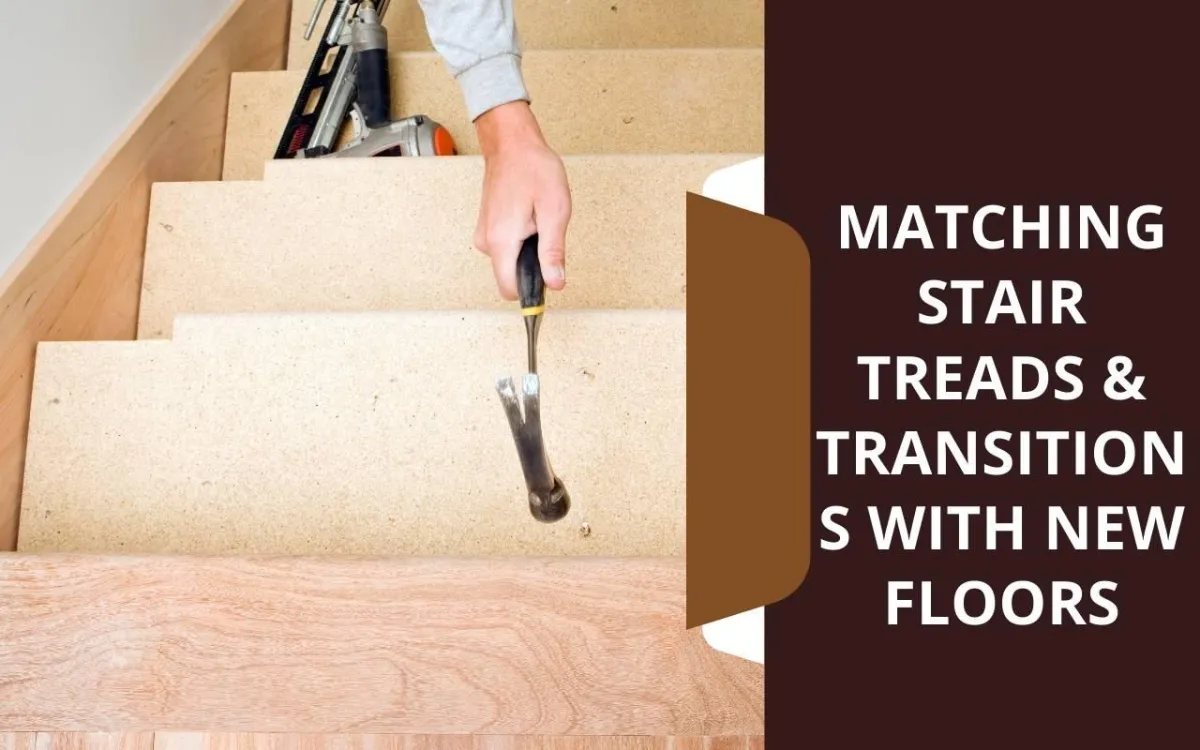
Matching Stair Treads & Transitions with New Floors
Blending old and new design elements transforms interiors. Matching stair treads & transitions hardwood with floors creates elegance and continuity across spaces.
However, success requires more than matching colors. It involves nosing profiles, reducers, safety codes, and careful detail. A seamless finish enhances style and function.
Designers and homeowners face the challenge of combining function and beauty. Proper planning ensures each stair tread supports safety, harmony, and flow.
Let’s explore how stair treads & transitions hardwood elevate interiors while respecting both visual appeal and code compliance.
Understanding the Importance of Matching Stair Treads and Transitions
Stair treads and transitions act as bridges between floors and rooms. Properly matched stair treads & transitions hardwood prevent visual breaks and imperfections.
Create continuity in design across multiple spaces.
Reduce trip hazards and protect flooring edges.
Maintain flooring investment value long term.
Matching both material and profile allows uniform expansion, preventing warping and future separation. Details protect aesthetics and function equally.
Selecting the Right Material for Stair Treads
Material choice defines both durability and style. Hardwood stair treads—oak, maple, walnut—offer strength and timeless appeal. Many homeowners select stair treads & transitions hardwood for consistency.
Engineered wood resists humidity and temperature fluctuations. This option suits challenging climates while retaining authentic finishes. Vinyl or laminate offer budget alternatives, though with reduced resale appeal.
Choose species aligning with flooring grade and finish.
Confirm hardness ratings for high-traffic areas.
Maintain consistent nosing profiles for seamless integration.
Whatever material you select, confirm it complements your chosen flooring. Consistency secures style and safety.
Exploring Nosing Profiles for Stair Treads
Nosing profiles influence both appearance and safety. Rounded or square edges adjust visual depth while also supporting code requirements. Select carefully for comfort and compliance.
Choosing Transitions to Complement New Floors
Transitions bridge flooring differences. Correct transitions—reducers, thresholds, T-moldings—ensure smooth movement and protect edges.
Reducers taper surfaces, preventing trip hazards.
Thresholds cleanly separate doorways and small height variations.
T-moldings unify equal height floors with subtle seams.
Match wood species, grain, and finish for cohesive flow. Early planning avoids mismatches. Visit our flooring page to explore options.
Matching Colors and Finishes for a Seamless Look
Perfect color matching requires testing under natural lighting. Stain absorption varies across boards, making sample checks critical. Consistency creates design harmony.
Factory finishes demand exact formula matching. Custom staining requires consistent brands and sealers. Record mixtures for repairs and refinishing later.
Ensuring Safety Compliance in Stair Design
Safety codes govern stair dimensions. Adherence protects both users and design integrity. Stair treads & transitions hardwood must follow tread depth, riser height, and nosing rules.
Verify local regulations. Proper dimensions, slip resistance, and railing placements ensure your staircase meets both beauty and safety needs.
Installation Techniques for Stair Treads and Transitions
Precision installation guarantees lasting performance. Acclimate wood for 72 hours before installation. This prevents movement, squeaks, and gaps.
Solid hardwood requires adhesive and fasteners. Engineered wood may allow adhesive alone. Expansion gaps accommodate seasonal changes.
Secure reducers, thresholds, and T-moldings carefully. Inspect joints for tightness. Adjust where needed to ensure consistent reveals.
Maintaining and Caring for Matched Stair Treads and Transitions
Regular maintenance preserves beauty. Sweep often and clean with pH-neutral products. Avoid excess water that can damage seams.
Inspect nosing, reducers, and thresholds frequently. Tighten or reapply adhesive as required. Address scratches with repair kits for quick fixes.
FAQs About Stair Treads and Transitions
Why is it important to match stair treads with floors?
Matching creates seamless design flow, enhances safety, and protects the longevity of your flooring system.
What materials are best for stair treads?
Hardwood options like oak, maple, or walnut provide durability and timeless style. Engineered options resist humidity better.
How do I maintain stair treads & transitions hardwood?
Clean regularly with hardwood-safe cleaners, avoid water excess, and recoat finishes when dullness appears.
Can transitions prevent tripping hazards?
Yes, reducers and thresholds smooth uneven surfaces, creating safe passage between rooms and floor types.
Do stair codes vary by region?
Yes, building codes differ locally. Always check regulations to ensure proper compliance before installation.
Tips for Achieving a Cohesive Look in Home Design
Consistency across design details builds unity. Reference wood species in trims, casings, and cabinetry to integrate spaces seamlessly.
Lighting impacts sheen selection. Choose satin finishes to reduce glare in bright areas. Document finish details for future updates.
For tailored flooring solutions, connect with us today through our contact page.
Elevating Your Home's Style with Harmonized Stair Treads and Transitions
Properly matched stair treads & transitions hardwood elevate renovations into cohesive showcases. Installation care and maintenance secure longevity.
Follow these guidelines to create continuous visual flow. Every step becomes a natural extension of your design vision.